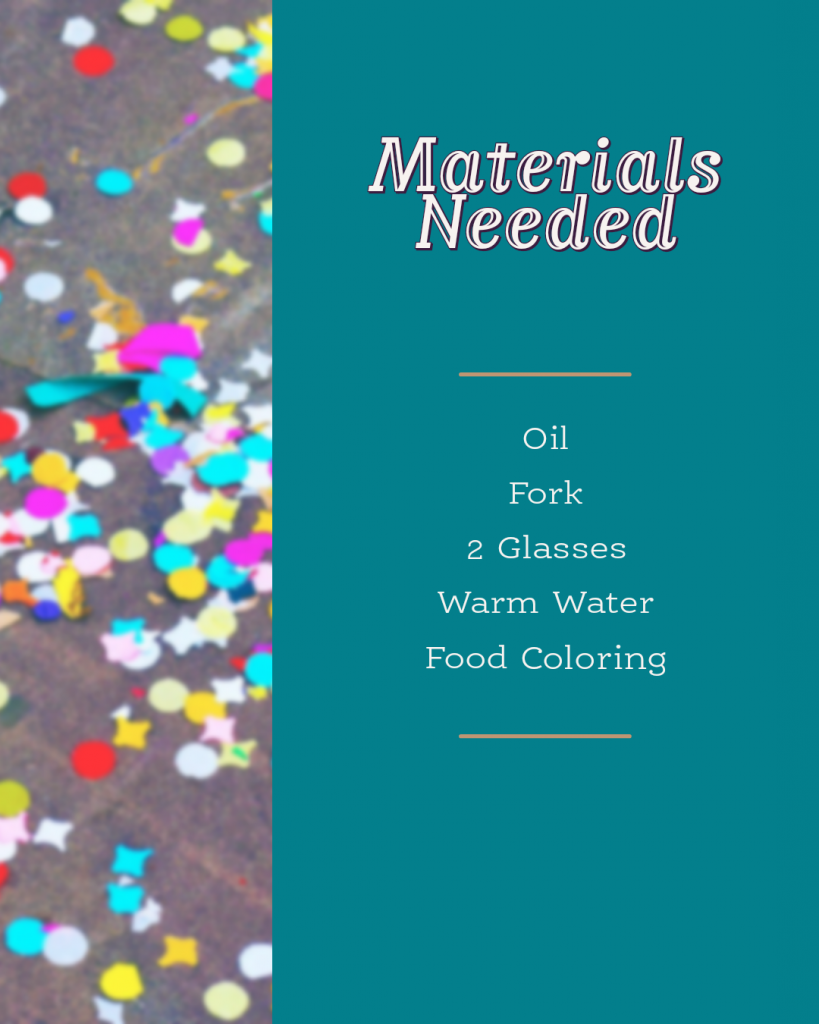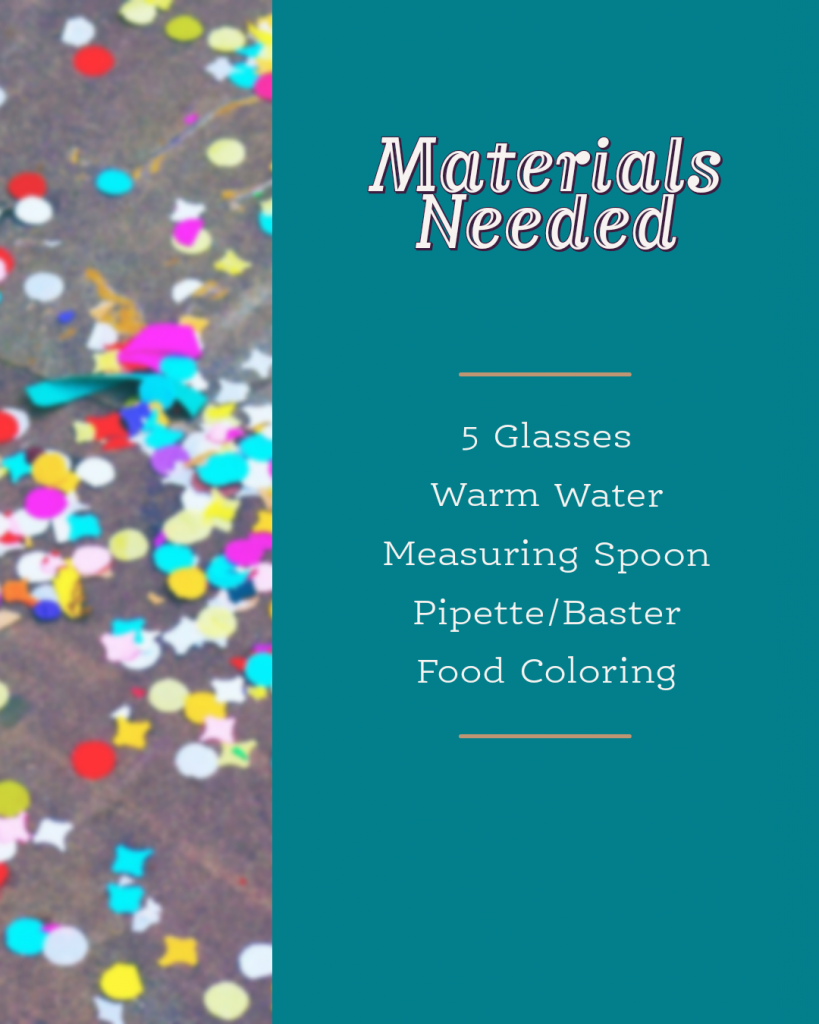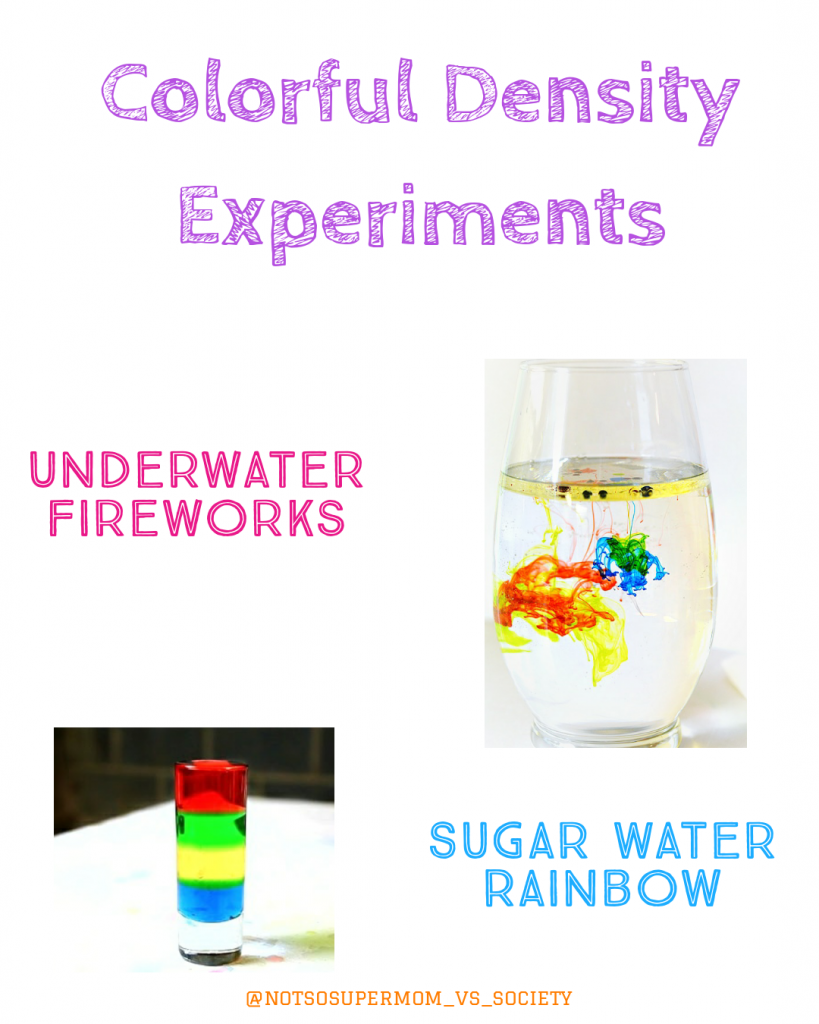
Today we did 2 fun density experiments, underwater fireworks and sugar water rainbows. I plan on doing more fun density related experiments with them another day, but I thought this would be a fun way to get us started.
I let them watch several YouTube videos to kick off the subject about density while I prepped the items. Total prep time for both experiments was under 10 minutes and cleanup was also super easy.
These experiments are super great because they teach everything from color mixing to density to chemistry. We even talked about dental health when making the sugar water!
Underwater Fireworks

Steps:
- Get out 2 glasses or see through containers.
- Fill one glass with water and the other with 2 tablespoons of oil (cooking or baby oil is fine).
- In the glass with oil drop a few drops of food coloring in it. You can use multiple colors or just one.
- With your fork, quickly mix up your oil and food coloring mixture.
- Pour mixture into the water glass.
- Wait and watch. The food coloring will slowly sink in the glass, with each droplet expanding outwards as it falls, looking like fireworks.
Science:
Food coloring dissolves in water, but not in oil. So when you pour in your food coloring/oil mixture the oil will float at the top of the water because it is less dense, and the food coloring will beging to dissolve once they sink through the oil and into the water.
Sugar Water Rainbow

Steps:
- Fill four glasses with 1/4 cup of warm water each. It’s important that each cup has the same amount of water in it.
- Measure and add a different amount of sugar to each glass of colored water. We found that the experiment works best with 4 colors, but you can experiment with all of them.
- Red: 2 tablespoons sugar
- Yellow: 4 tablespoons sugar
- Green: 6 tablespoons sugar
- Blue: 8 tablespoons sugar
- Stir vigorously to completely dissolve the sugar in the glasses. Stirring to completely dissolve the sugar is very important; without the sugar fully incorporated into the water, you’ll have trouble getting the colors to separate. Don’t be afraid to heat up your water a little more, too, if it’s not working – 5 to 10 seconds in the microwave and an extra stirring session should help.
- Use the syringe/baster to transfer about half of the blue water into the empty glass/jar/test tube. This is where you’ll make your rainbow.
- Still using your syringe, transfer half the green water into the rainbow glass. Add it slowly on top of the blue water. It will sit on top. Add the yellow next.
- Finally, carefully add the red, finishing your beautiful rainbow.
WHAT IS WATER DENSITY?
Density is all about compactness of stuff in space. For this experiment, the more sugar in each glass of water, the greater the density of the water. Same space, more stuff in it! The denser the substance, the more likely it will sink. This is how our rainbow sugar water density tower works!
By increasing the amount of sugar in the solution but keeping the amount of water constant, you create solutions that have increasing densities. The more sugar you mix into the same amount of water, the higher the density of the mixture. So density explains why the colored sugar solutions stack on top of each other inside the baster.
You could vary this water density experiment by looking at the density of different concentrations of salt dissolved in water!
Which experiment was your favorite and why? Comment below and let us know!


Hi there, I enjoy reading through your article. I wanted to write a
little comment to support you.